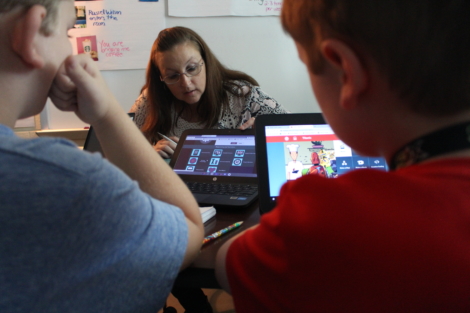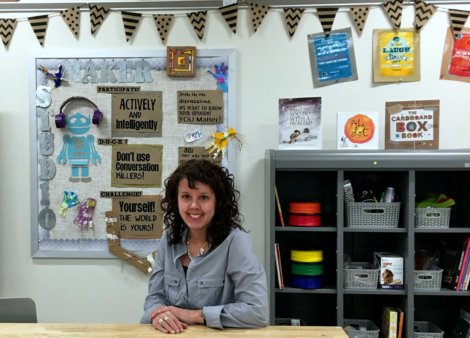
Teaching Food Chains With Playful Assessments – A CBE Aha! Moment 9.19
Posted by cemignano on
We take great pride in our certification process and the fact that it leads to more student-centered teaching practices with BrainPOP. For more information on how our certification program positively impacts teaching, check out our efficacy report! In the following post, we’ll hear how September CBE of the Month, Tracie Gones, went from using traditional assessments to playful assessments with BrainPOP.
1) Tell us your BrainPOP “Aha! Moment” from the certification process.
During the certification process, the use of playful assessments was a huge “Aha! Moment” for me. As teachers, it is critical that we have an accurate understanding of how well our students have learned what we have taught. Assessment is our way of doing that. Unfortunately, that word “assessment” carries such a huge weight with it. Traditional assessments are boring at best and only sometimes give a true, comprehensive picture of a student’s understanding. But in the BrainPOP certification course, I learned about all the ways that students can show what they know in more playful ways. Not only are these playful assessments not boring, but the negative feelings associated with traditional tests are gone, so students can feel more at ease to communicate their understanding. Prior to this “Aha! Moment,” I had only used BrainPOP as an introduction to a topic through movies or a quick check for understanding with the quiz. Now, I can use all the content at every point of a lesson, including a summative assessment.
2) What is a specific lesson or unit you’ve taught in the past that you will re-formulate with BrainPOP?
I’ve been teaching about food chains/webs and ecosystems for years. Usually, students would read about them, find some around us at school, watch BrainPOP movies, and even make them with pictures from magazines. But the assessment was still traditional. In those assessments, students had to define vocabulary, identify parts of the food chains/webs and ecosystems, and sometimes draw one of their own. They would also be asked to describe problems with the ecosystem and see the importance of plants in an ecosystem. However, this always felt contrived. Many students just memorized information, with no real meaning. Other students struggled to complete the tasks because there was no real connection to the content.
3) How will you integrate BrainPOP’s new features and tools to replace what you’ve done in the past?
When I found the game “Food Fight” connected to the Ecosystems and Food Chains movies, I knew it could be used as an assessment for my unit! In this game, students assume the role of an animal in a savanna ecosystem. They have to build the ecosystem from scratch and get to watch what happens with every step. This game gives students the opportunity to apply their understanding of food webs and ecosystems in a real life situation. By using the game and the SnapThought tool, I am able to collect genuine reflections that show whether or not students understand the complex nature of an ecosystem.
Throughout the unit, students get to play the game with a partner to learn how it works. This also allows them to build their vocabulary and explore strategies for “winning.” When it is time for the final assessment, students must use the SnapThought tool to explain their thinking about the decisions they make. I provide vocabulary words and sentence stems that give them a starting point, but the “meat” of the thinking comes in their own words. The elements of choice and gaming help keep students at ease and allow them to use their own words to explain what is happening. This is an authentic assessment that students actually enjoy and one that gives me extremely valuable information about their learning.














